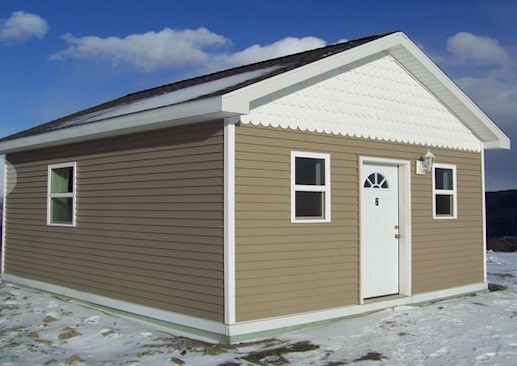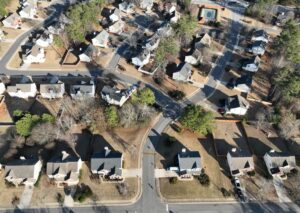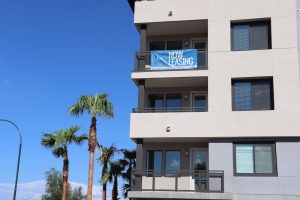There has been an explosion of television shows touting the joys of the tiny house lifestyle. But some cities are seeing tiny houses as a possible solution to homelessness.
Tiny homes are generally defined as freestanding dwellings between 90 square feet and 300 square feet.
Cate Mingoya, who received her master’s degree in city planning from the Massachusetts Institute of Technology in June, looked at tiny houses as an option to help the more than 600,000 Americans who do not have anywhere to live.
Her paper is called “Building Together. Tiny House Villages for the Homeless: A Comparative Case Study.”
“Tiny houses offer an alternative approach to helping those experiencing homelessness in a way that provides the human basics — such as heat, shelter, water — while going deeper and providing autonomy, respect, and care,” Mingoya said in a statement.
In most municipalities, however, homes of this size are considered too small for human habitation. They’re considered garages or garden sheds, where residents are not permitted to reside.
So tiny house builders have found ways around regulations, such as placing the houses on trailer beds or wooden blocks. These allow the structures to be situated in an unregulated zone, or come under the purview of motor vehicle regulations.
Housing the chronically homeless can save municipalities millions of dollars in annual health care costs by reducing emergency room visits and time spent in hospitals or respite centers, said Mingoya.
Additionally, providing permanent housing to these individuals reduces legal costs, as they have fewer run-ins with the law for crimes such as trespassing, public urination, loitering, begging, and public consumption of alcohol.
Placing the homeless into permanent housing can also save lives: homeless adults have a mortality rate that is three times that of the general adult population.
Second Wind Cottages Inc., based in Newfield, New York, has already built six cottages for men, with plans to build nine more, said Chuck Newman, a board member for the nonprofit group.
“The cottages are based south of Ithica, in the town of Newfield. There’s a bus stop right across the street, so residents can get to their jobs,” said Newman. “Plus there are no zoning law in Newfield, so we don’t have to get variances to build.”
Second Wind Cottages received the land as a donation, along with materials donated by 84 Lumber and discounts from Home Depot, said Newman.
“The first person moved in in January 2014, and right now we have all six occupied,” said Newman. “We’re in the middle of building three more, which are 95 percent finished. We expect to have them occupied by October.”
The houses are 16 feet by 20 feet and are 330 square feet. They include a complete bathroom with a shower and a kitchenette with a 24-inch stove and small refrigerator, said Newman. “There’s space for a bed. It’s good for single occupancy because everything is in one room.”
Second Wind does everything using volunteers, said Newman. “So long it takes for us to build a house depends on how many volunteers we get and how many donations we get,” he said. “We laid the foundation for our three new houses in late spring, with two of us working on them full time.”
There were also shifts — from 8:00 a.m. to 2:00 p.m. on Saturdays and 1:00 p.m. to 4:00 p.m. on Wednesdays, said Newman. “On average, it takes about three months or so to build a cottage.”
There are 25 men on waiting list, and it goes by need, said Newman. “But if someone is living underneath a bridge and they want to come in, they go to top of the list,” he said. “But we’re new at this, so we’re still working on the priority system.”
But it’s not just about housing people, said Newman. “It’s also all about getting residents a better job in a clean and sober environment,” he said.
Right now, the cottages are only for men, said Newman. “But we have a goal in the future to build tiny houses for single mothers,” he said. “We have a property in mind to build three or four tiny duplexes, but we don’t own the property.”
The city is realizing the advantages of using empty lots to house people, said Newman. “There’s a lot more dignity in having a cottage. It’s your own space and no one steals your stuff.”
In her paper, MIT’s Mingoya wrote that tiny houses have the potential to be a long-term tool with short-term flexibility. “With some underutilized public or private land, a few thousand dollars for construction, a zoning variance, and some volunteers, millions of municipal dollars can be saved,” she said.
“And most importantly, a group of people who are traditionally cast to the edges of society can now be integrated and given a safe place to call home.”
For story ideas, check your local housing agency or homelessness organizations to see if they are considering tiny houses to help their homeless populations. How much do your local tiny houses cost to build? Are activist grounds funding construction?










